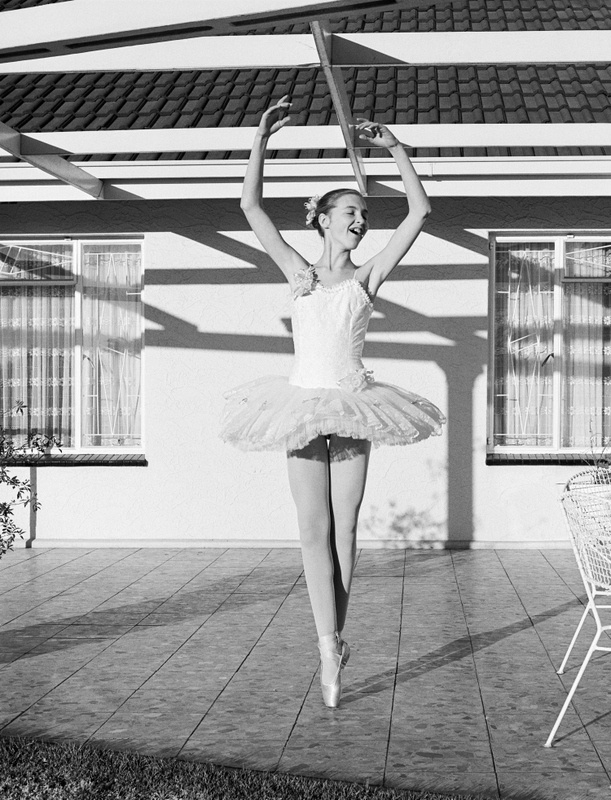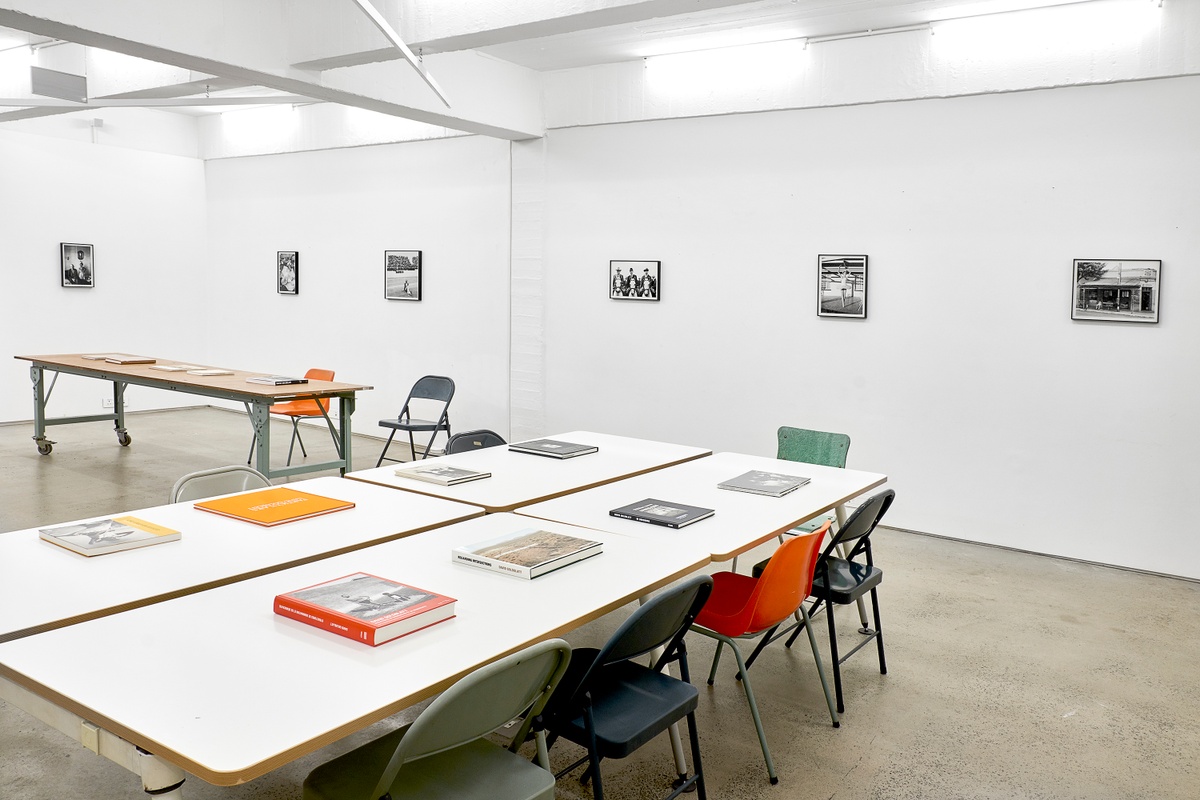David Goldblatt

Girl in her new tutu on the stoep is an image of youthful confidence, “of knowing who you are and what you are and that this is your place” as Goldblatt said. The photographer, looking always for a point of dissonance in his subject, for that detail that might prick the viewer, delighted in the punctum that was the girl’s missing tooth. Another unseen dissonance loomed large – the precarity of white privilege in the increasingly violent decade of the 80s.
Girl in her new tutu on the stoep was first published in In Boksburg (1982). It is also included in Lifetimes Under Apartheid, 1986; Fifty-one Years, 2001; Kith Kin & Khaya, 2011; In Boksburg (second edition), 2015; and Structures of Dominion and Democracy, 2018.
b.1930, Randfontein; d.2018, Johannesburg
“I was drawn,” the late photographer David Goldblatt wrote, “not to the events of the time but to the quiet and commonplace where nothing ‘happened’ and yet all was contained and immanent.” A preeminent chronicler of South African life under apartheid and after, Goldblatt bore witness to how this life is written on the land, in its structures or their absence. Unconcerned with documenting significant historic moments, his photographs stand outside the events of the time and yet are eloquent of them. Through Goldblatt’s lens, the prosaic reveals a telling poignancy. Even in those images that appear benign, much is latent in them – histories and politics, desires and dread. His photographs are quietly critical reflections on the values and conditions that have shaped the country; those structures both ideological and tangible. Among his most notable photobooks are On the Mines (1973), Some Afrikaners Photographed (1975), In Boksburg (1982), The Structure of Things Then (1998), and Particulars (2003).
